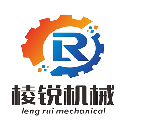In mechanical equipment, in order to obtain a larger transmission ratio, or to change gears, it is often necessary to use multiple pairs of gears for transmission, such as gearboxes and differentials used in machine tools and automobiles, and gear reducers widely used in engineering. This transmission system consisting of multiple pairs of gears is referred to as gear train.
According to whether the shaft position of each gear is fixed during the transmission process, the gear train can be divided into two basic types: fixed shaft gear train and planetary gear train. When driving, the position of the geometric axis of each gear is fixed. This gear system is called a fixed-axis gear system.
In the transmission process, the finite axis of gear g rotates around the common axis of gears a, B and member h, and such a gear train becomes a planetary gear train. Planetary gear trains can be divided into planetary gear trains and differential gear trains according to their different degrees of freedom. The planetary gear train has one degree of freedom, and the planetary gear train has two degrees of freedom.
1. Gear train transmission ratio
The ratio of the speed of the driving wheel at the beginning of the gear train to the speed of the driven wheel at the end of the gear train is called the transmission ratio of the gear train, and the viewpoint is indicated by I.
2. Gear train function
2.1 Complete the transmission of motion and power between the two distant shafts
In gear transmission, when the main and slave shafts are far apart, if only a pair of gears are used to drive, the scale of the gears will inevitably be large. This increases the structural scale and weight of the machine, wastes materials, and is inconvenient to manufacture and install. If a gear train composed of two pairs of gears is selected for transmission, the scale of the gears can be much smaller, and the production and installation are more convenient.
Working principle of variable speed bicycle gear
2.2 Complete shunt transmission
Through the use of a gear train, the drive shaft can drive the driven shaft to rotate at the same time to achieve the various speeds required.
Complete variable speed transmission
When the rotation speed of the driving shaft is constant, the driven shaft can obtain various operating speeds through gear transmission. This kind of transmission is called a variable speed transmission. Many machines such as automobiles, machine tools, and cranes require variable-speed transmission.
Achieved a larger transmission ratio
Large transmission ratio can be achieved by selecting fixed shaft gear train or planetary gear train.
If a fixed-shaft gear train is selected to obtain a large transmission ratio, a multi-stage gear transmission is required, which makes the transmission device structure messy and bulky. For planetary gear trains, only a few gears are needed to achieve a larger transmission ratio. Since the planetary gear train uses multiple planetary gears to take charge of the load, the internal meshing transmission is generally selected. It makes the gears in the central space that are reasonably used, and its input shaft and output shaft are on the same axis, which not only greatly improves the planetary reducer The load-bearing capacity, but also makes the radial scale very compact. In the case of the same power and transmission ratio, the volume and weight of the planetary reducer is only 1/2 ~ 1/3 of the fixed shaft gear reducer.
Complete the synthesis and differentiation of sports
The two-degree-of-freedom differential planetary gear system is selected to complete the induction and differentiation of motion. This is the common function of the planetary gear system.
Motion summary: The differential gear train has two degrees of freedom. Only given the movement of any two of the three fundamental weights, can the movement of the third fundamental weight be determined. In other words, the third fundamental weight movement is a combination of the other two fundamental weight movements.





